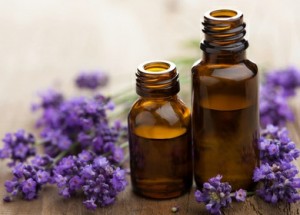
Essential oils are the oldest known form of medicine to mankind. Defined, essential oils are fragrant liquids drawn from flowers, seeds, stems, leaves, bark, bushes, herbs and shrubs.
History of Essential Oils
The evidence that essential oils have been used for a very, very long time is well documented in hieroglyphics and ancient manuscripts. A scroll that is carbon dated to 1500 B.C. reveals over 100 Egyptian remedies that use essential oil.
When King Tut’s tomb was opened in 1922, fifty alabaster mason jars to hold oil were found. The oils had been stolen by thieves who left gold in the tomb. In fact, in many cultures, essential oil was more valuable than gold.
The oldest surviving medicine book in China written by Shen Nong Shi in 300 B.C. shows over 350 herbs and their medicinal uses along with how to use essential oils.
Rene Maurice Gattefosse coined the term aromatherapy. He was working in his lab one day and suffered a severe burn. Reaching for something to numb the pain, he grabbed a vial of lavender oil. His burn healed without infection, and he experienced only minor pain and swelling.
For Gattefosse, this confirmed what ancient people knew all along; once essential oil is absorbed by the body it reacts with body chemistry to promote healing. Because of Gattefosse’s discovery, Dr, Jean Valet used essential oils to treat wounds and infections during World War II.
In the 1950’s Marguerite Maury used diluted essential oil a carrier oil and applied it directly to skin using Tibetan Massage techniques. She designed specific mixtures depending on individual needs.
Essential oils and aromatherapy are gaining more and more ground in mainstream medicine. With consumers becoming more discerning about the importance of toxic free and organic ways to heal, essential oils are now being seen as an invaluable resource worth study and recognition.
Here are three amazing essential oils that everyone should have at home.
Tea Tree: Tea tree (Melaleuca alternifolia) can be used on any number of skin conditions. It is one essential oil that you definitely want in your medicine cabinet. Loaded with antiviral, antiseptic and antimicrobial properties, this oil can be applied directly to the skin or mixed with a carrier oil such as sweet almond or grapeseed. Use this potent essential oil to treat bug bites, cuts, scrapes, ringworm, thrush, nail fungus, athlete’s foot and cold sores.
Peppermint: Peppermint (Mentha piperita) is an essential oil that is known for its anti-inflammatory, pain relieving, antibacterial, antifungal and decongestant properties. Many people use it when they have colds or headaches. When the oil is applied to the chest during a cold, it opens up and soothes the lungs.
A small amount diluted in a carrier oil massaged into the temples can ease the pain of a headache. Some people find that mixing peppermint oil with lavender will create a soothing and calming effect. Peppermint oil can also be used to treat nausea, fever intestinal gas, indigestion and stomach pain.
 Lavender: Who can resist the sweet aroma of lavender (Lavendula officinalis)? This garden favorite is much more than a pretty and aromatic plant. It is a diuretic, with sedative properties that also has anti-inflammatory, antiseptic, antifungal, antibacterial and antiviral components.
Lavender: Who can resist the sweet aroma of lavender (Lavendula officinalis)? This garden favorite is much more than a pretty and aromatic plant. It is a diuretic, with sedative properties that also has anti-inflammatory, antiseptic, antifungal, antibacterial and antiviral components.
One of the best known remedies for burns, lavender helps cool on contact and aids in healing. Additional uses of lavender include healing abscesses, fungal infections, lice, cold sores, cuts, hives, insect bites, stretch marks and other skin conditions. Recent research credits lavender with its ability to reduce pain, reduce high blood pressure, treat sinus infections, throat infections and congestion.
As with any medical treatment, always speak to a healthcare professional before using essential oils, and select only the highest quality essential oil available.
-The Alternative Daily

